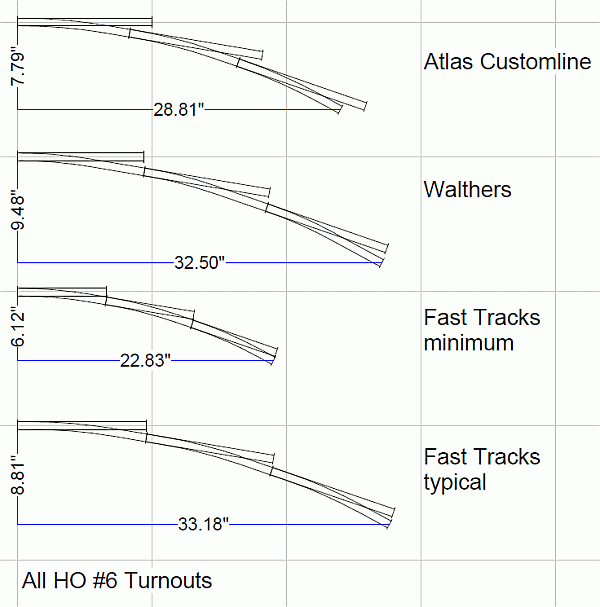fotoflojoe
Member
After playing with XtrackCad and SCARM, I've decided that until I have a much more complete and solid idea for a track plan, I'm going to draw them by hand. The above programs are excellent, however, my low skill level doesn't allow me to experiment with a design by "doodling" in them yet.
Seems much quicker to ink in my bench work on graph paper, then scribble away as ideas come to me.
For hand drawing, I'll work in 3/4" to the foot scale.
I've got a firm grasp on straight track (ruler) and curves (compass), but I'm not completely sure about turnouts.
When drawing a "#X" turnout, is it really as straight-forward as: measure X units along the straight from point A to point B, measure over one unit from point B (either right or left as appropriate) to point C, then draw the diverging leg as a line between points A and C?
That seems logical to me, but I'd like to be sure - I don't want my drawings going off into fantasy land.
How might one draw other elements, such as a wye or curved turn-out?
Can anyone point me toward a link that would have this information?
When I googled for it, the only results that came back were for full-size track templates, and track plans that the user had hand-drawn.
My search-fu has failed me...
Thanks for reading!
Seems much quicker to ink in my bench work on graph paper, then scribble away as ideas come to me.
For hand drawing, I'll work in 3/4" to the foot scale.
I've got a firm grasp on straight track (ruler) and curves (compass), but I'm not completely sure about turnouts.
When drawing a "#X" turnout, is it really as straight-forward as: measure X units along the straight from point A to point B, measure over one unit from point B (either right or left as appropriate) to point C, then draw the diverging leg as a line between points A and C?
That seems logical to me, but I'd like to be sure - I don't want my drawings going off into fantasy land.
How might one draw other elements, such as a wye or curved turn-out?
Can anyone point me toward a link that would have this information?
When I googled for it, the only results that came back were for full-size track templates, and track plans that the user had hand-drawn.
My search-fu has failed me...
Thanks for reading!


